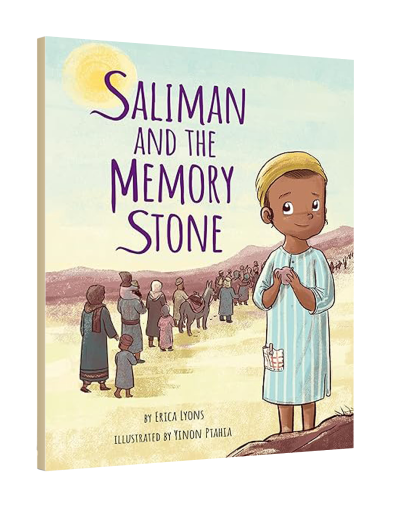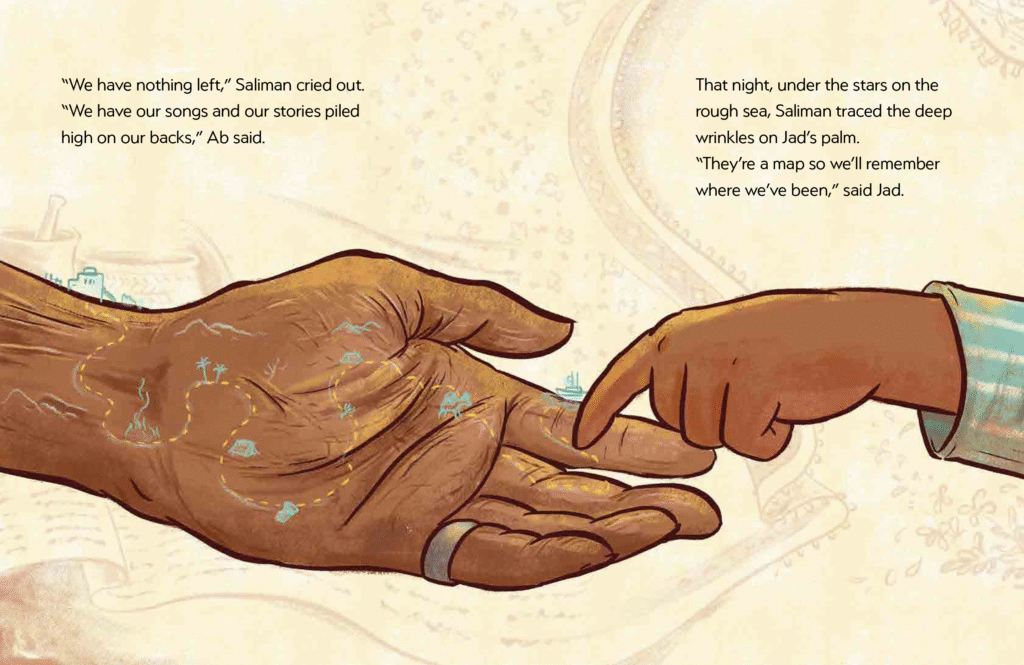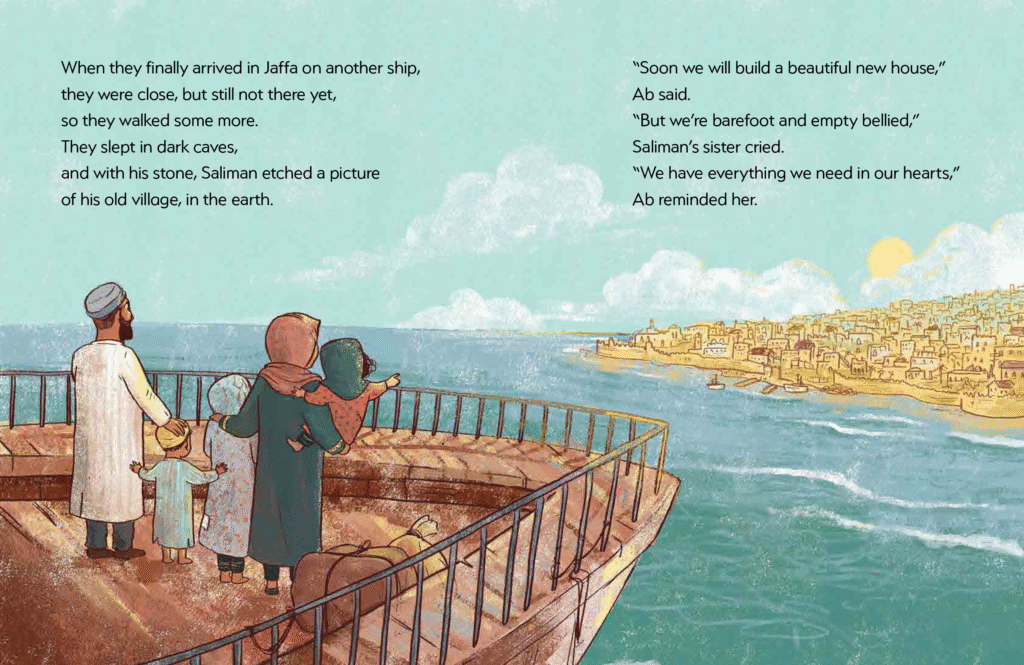
In my book Saliman and the Memory Stone, I recreated the echoes of the Jewish Yemenite (Temani) experience through interwoven threads of text and art.
While I have a fair number of friends with Yemenite roots, most trace their family’s story to Operation Magic Carpet rather than the 1881 first Aliyah. Still, their families helped me understand the rhythm and perspectives particular to the Yemenite experience. In addition to speaking with friends (and their mothers and grandmothers), I spoke with academics and relied on traditional research sources. While books and research articles provided me with the factual background and a timeline, it was film, family story, and food that helped me to better immerse myself in the culture.
From the opening lines: Saliman was born when the moon was full and round and the rains refused to come, I used immersive language to invite readers into a culture and experience that is very different from their own. And, given the importance of poetry and song in Yemenite culture, I mimicked the cadence with my words.

In the creation of any picture book, authors have to, for the most part, surrender to the process and allow the illustrator their own creative process, but with Saliman and the Memory Stone I told the publisher that it would work best if a Yemenite or Mizrahi illustrator was assigned to the project. This story needed someone who could translate the Yeminite culture in a way that would make it come alive so that readers would understand that while Saliman’s journey was history, this is an identity and a culture that is very much alive. The publisher Behrman House found that and so much more in Yinon Ptahia.
Yinon gave the book the feel of not just history, but of memory. He added layers of richness and texture to the story. Anecdotally, because he is Yemenite, he was even able to suggest an eleventh hour edit to the manuscript. He said that calling the parents Um and Ab (as opposed to Ema and Aba as I had initially written) would add an additional layer of authenticity.
In Saliman and the Memory Stone, visual and textual storytelling collaborated in the best of ways and created a space for histories often rendered invisible in Ashekenazi-centric spaces. Readers were invited into another world that perhaps they didn’t know existed.

Saliman and the Memory Stone, written by Erica Lyons and illustrated by Yinon Ptahia, New Jersey: Apples & Honey Press, 2024.


